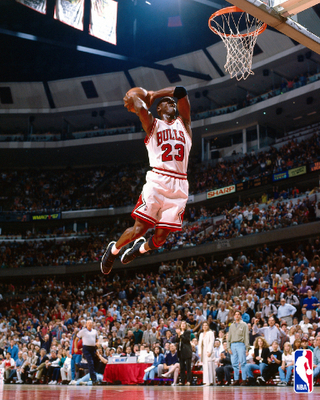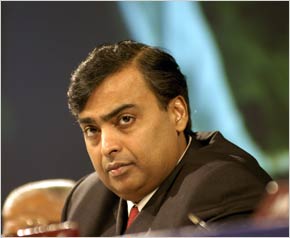WARNING: Cricket lovers may or may not be offended while reading this article. Sachin lovers may hurt their necks while nodding their heads excessively. And basketball lovers in India are going to shoot themselves in their feet out of exasperation.
 Right now, it is hard to escape the Cricket hysteria in India. From the time of writing this, the first ball of the Cricket World Cup Final, held between India and Sri Lanka in Mumbai, is only about 22 hours away. But the country is already in fever pitch. In the last few weeks, the media has had a field day with India's and its testing games, against three-times champions and Bond-villains Australia and our neighbours/enemies/rivals/little brothers Pakistan, a game that had 1.4 billion people watching it worldwide.
Right now, it is hard to escape the Cricket hysteria in India. From the time of writing this, the first ball of the Cricket World Cup Final, held between India and Sri Lanka in Mumbai, is only about 22 hours away. But the country is already in fever pitch. In the last few weeks, the media has had a field day with India's and its testing games, against three-times champions and Bond-villains Australia and our neighbours/enemies/rivals/little brothers Pakistan, a game that had 1.4 billion people watching it worldwide. Now we're in the Final, and I feel that about 90% of the newspaper stories, TV tickers, SMS messages, water-cooler discussions, Facebook Status-updates, and Twitter hashtags from India are cricket-related. The craziness has from Numerologically enlightened astrologers giving advice to our players to attention-seeking pin-up Models offering our 'Boys in Blue' a red-blooded strip-tease; with each win, more and more Indians have gotten involved. The Pakistan game on Wednesday was a half working day to most, including the government. Few work on Saturday, but there will be even fewer outdoors during the cricketing hours. Every relevant leader, celebrity, and sporting hero has had their say.
It might not be a stretch to call this the most hyped sporting event in India, at least in my lifetime. And it was funny, because when the World Cup began a month and a half ago, the lack of interest was startling. There were too many meaningless games, India's contests were stretched out too far from each other, and even the promotion on the billboards/TV channels seemed hollow.
 Back then (it seems a lifetime ago), it was surprisingly shocking to me that India is hosting the biggest tournament of its favourite game, and India was playing as favourites, and yet, the hype was missing. I compared it to the FIFA World Cup, a football competition held in another country, and a sport that is, at best, second in India, and India were far from even getting a sniff at the top 32 nations that participated - and yet, the reception to the Football World Cup here seemed crazier.
Back then (it seems a lifetime ago), it was surprisingly shocking to me that India is hosting the biggest tournament of its favourite game, and India was playing as favourites, and yet, the hype was missing. I compared it to the FIFA World Cup, a football competition held in another country, and a sport that is, at best, second in India, and India were far from even getting a sniff at the top 32 nations that participated - and yet, the reception to the Football World Cup here seemed crazier. I take all that back now. I have been alive for about 26 and a half years, and India has been feeding on a cricket frenzy for about 28, ever since Kapil Dev hoisted our last (and only) World Cup Trophy at Lords, England, in 1983. India's greatest ever, and perhaps the world's greatest ever, Sachin Tendulkar made his debut in 1989 - I was five, and it was around the same time I made my own cricket-watching debut. Tendulkar, and through him, the game of cricket, became my first love.
But as time has passed, that love has diminished substantially. Tendulkar is still my first love, but I'm committed to my soulmate now, the game of basketball. Which is perhaps why, even though I spend night and day in pursuit of hoops-enlightenment, I still get a soft spot every time Sachin heads out to play. I only watch cricket if India is playing, and I doubt very much if I will be able to have any interest once Sachin retires. It would make it a fitting full circle of my affair with cricket, started and finished by the same man.
 Because Cricket itself - and I'm sorry to say this my bat-and-ball fanatic friends - is a fairly lame sport. The games go on for five days (Test) or nine hours (ODIs). Even the 'shortest' form is three hours long, and it is considered to be the game's most meaningless form. Cricket has become disgustingly embroiled with big money bets and fixing, making fans suspicious of almost anything aberrational that occurs in the game. Athletically, cricket players are a joke when compared to the top class individuals in other sports that require some form of running. And its a game played competitively amongst about 10 teams in the world, with five or six others flirting with the big boys and (mostly) getting a whooping. Yes, India is the best in the world, but we need to curb our enthusiasm in being the best at something that, frankly, most countries don't really give a shit about.
Because Cricket itself - and I'm sorry to say this my bat-and-ball fanatic friends - is a fairly lame sport. The games go on for five days (Test) or nine hours (ODIs). Even the 'shortest' form is three hours long, and it is considered to be the game's most meaningless form. Cricket has become disgustingly embroiled with big money bets and fixing, making fans suspicious of almost anything aberrational that occurs in the game. Athletically, cricket players are a joke when compared to the top class individuals in other sports that require some form of running. And its a game played competitively amongst about 10 teams in the world, with five or six others flirting with the big boys and (mostly) getting a whooping. Yes, India is the best in the world, but we need to curb our enthusiasm in being the best at something that, frankly, most countries don't really give a shit about. Plus, the game has been so disgustingly commercialised that I cringe at myself for even sitting through it, and then, out of patriotism and childhood habits, I sit through it anyways. Of course, it doesn't make any sense to completely rid cricket of sponsorships or endorsements, but things get out of hand when fans spend a higher proportion of the day watching Hyundai advertisements than good cricketing shots.
Worst of all, Cricket's bonanza rise has meant a sharp dip in fan popularity and financial support for other sports in India. Cricket isn't the only sport where we are successful - India is rising in Tennis, Badminton, Chess, and of course our 'National Sport', Field Hockey. We are an improving nation in Football and of course, there is a rising wave of interest for basketball in the country.
 But nothing, unfortunately, absolutely nothing, will ever catch the entire country's emotions like cricket does. If the Yao Ming affect was to happen in India - i.e. - an Indian was good enough to make the NBA, it would still not change our culture like the culture in China. China has passionately embraced hoops over the last 10 years. In India, any other sport can only aim at becoming number two at best.
But nothing, unfortunately, absolutely nothing, will ever catch the entire country's emotions like cricket does. If the Yao Ming affect was to happen in India - i.e. - an Indian was good enough to make the NBA, it would still not change our culture like the culture in China. China has passionately embraced hoops over the last 10 years. In India, any other sport can only aim at becoming number two at best. And why is that, you ask? Because with the rise of other sports like Football, Basketball, or Tennis, the share of fan interest, at best is going to be divided. No single hoops event anywhere in the world is going to halt the Indian government on a Wednesday afternoon like the India-Pakistan Semi-Final did. Nothing that the Indian Football Team achieves will be considered a bigger achievement than India potentially lifting a Cricket World Cup. In India, even the individual 'stars' of other sports, like Viswanathan Anand, Somdev Devvarman, Sushil Kumar, Saina Nehwal, Abhinav Bindra, or others, are only known because the Media has chosen to occasionally focus on them as individuals - very rarely has that interest spilled to the sport itself being hyped - The names above are arguably bigger in India than Chess, Tennis, Weightlifting, Badminton, or Shooting.
At best - and I'm obviously speaking from a hoops-point-of-view here - we Hoopistanis can hope for a number two spot in India. Who knows if the best players in India will ever receive the love and adulation usually reserved for cricketers... Who knows if the most-discussed sporting event in India, even for a day, will ever be a basketball game. What we can be fairly sure of is, barring a disaster of catalslymic events (every cricket game is fixed, and thus the game is like WWE, or the 2012 apocalpyse), Cricket will never be replaced in India.





























